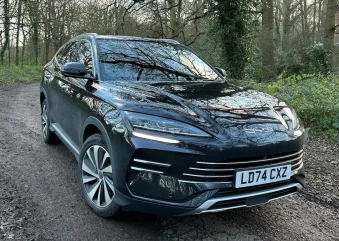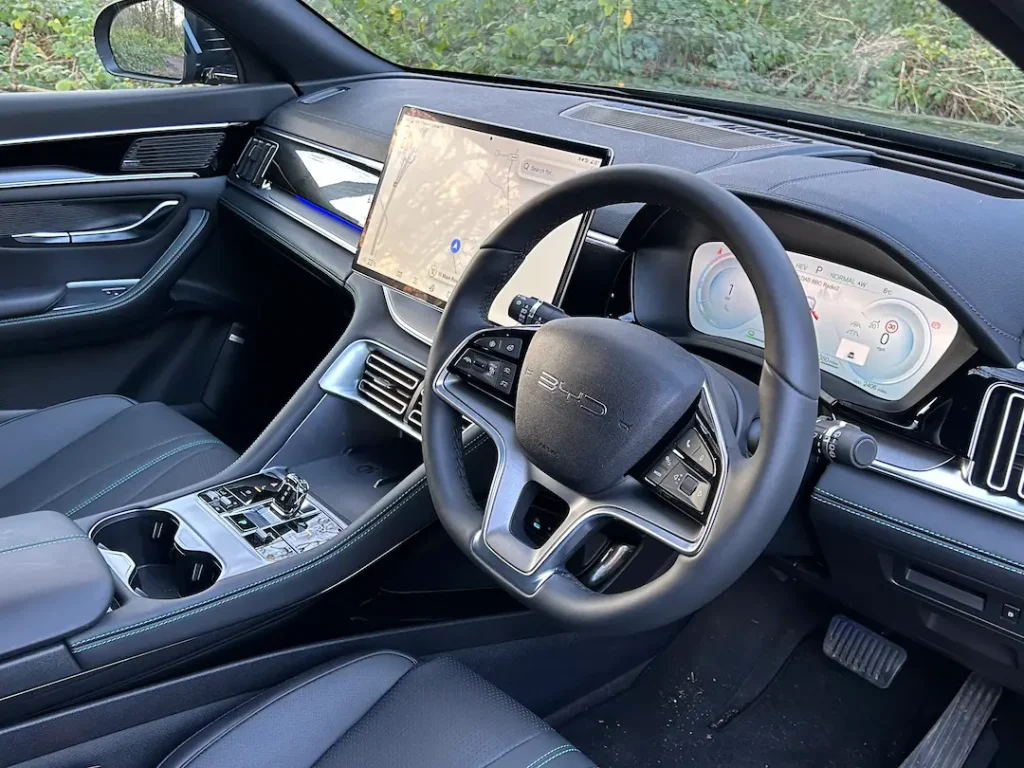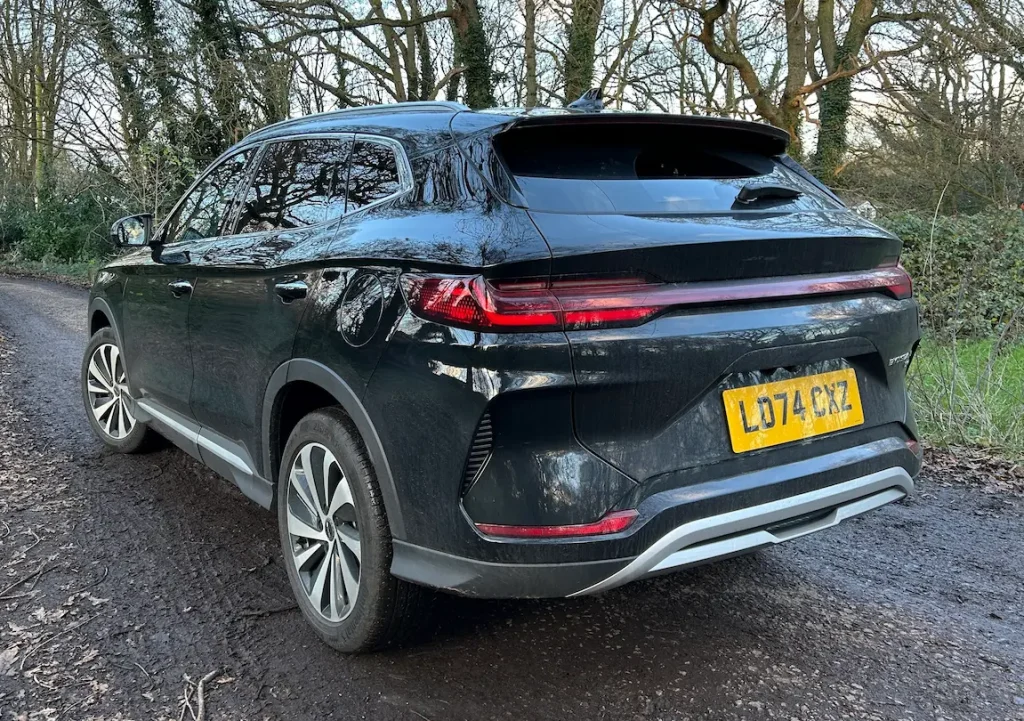
The oldest UK BYD EV models might have been registered over two years ago, but the Chinese manufacturer hasn’t sat on its laurels, moving into the plug-in hybrid market with the Seal U family SUV.
Whilst this plug-in hybrid is new to the UK market and range, BYD has history with these powertrains dating back to 2008, when it produced its first one, and BYD tell us more will follow.
Design and interior
The Seal U, or Seal U DM-i, as it’s badged on the boot, is supposed to be an SUV plug-in hybrid version of its sleek range-topping Seal EV saloon. However, it’s difficult to see the link from the U’s exterior styling. The only design similarities being the shape of the front headlights, and the distinctive beltline running from the front to rear lights. Otherwise, it’s quite generic, but inoffensive. Interestingly, some car friends first mistook it for a Porsche Macan at a distance, and we can see the similarities.
Also, British media weren’t fans of the unsubtle ‘Build Your Dreams’ script that came on the back of the earliest Atto 3 models. It seems the company has listened, as there’s only very subtle model badging at the back of the Seal U.

There are three Seal U versions available, but interior specifications are largely the same, so inside think vegan leather trim on the lower dashboard and high-backed seats, plenty of shiny piano black trim, and the 15.6in rotating infotainment touchscreen that has become a USP for all its models. The infotainment works as before – but we still wish for some physical controls for the heating. Still, there’s impressive storage in the centre console, plus plenty of charging points for phones.
The tall seats and driving position are comfortable, there’s sufficient legroom front and rear. Although maybe all this legroom is at the expense of boot space, as at 425 litres, it’s behind PHEV rivals, such as the Volkswagen Tiguan and another favourite of ours, the Toyota RAV4, which offer more.
Performance and drive
There are three versions of the Seal U available: Boost, Comfort, and Design. It might look quite generic on the outside, but this BYD is quite clever underneath. We had the single-motor, front-drive Boost, which is predicted to be the best-seller for fleet. This and the Comfort equipment grade have an Atkinson-cycle 1.5-litre naturally aspirated petrol engine, plus an 18.3kWh battery and electric motor at the front. With the petrol engine powering either the front wheels or electric motor. Choose the range-topping Design grade, which comes with four-wheel drive, and the extra rear motor is only powered by the front battery.
The Boost that we drove had 218hp, 0-62 acceleration in 8.6 seconds, and an impressive EV-only range of50 miles. Move up to the Comfort, which has a bigger 26.6kWh battery, and it offers even more EV-only range at 78 miles. Or, the range-topping four-wheel drive Design, with its extra rear motor and turbo for the 1.5-litre engine, which has 324hp, offering 0-62mph acceleration in 5.7 seconds, although the EV range drops to 43 miles. Our Boost, and the range-topping Design, have an 8% company car tax BIK figure; however, choose the Comfort, and it has a lower 5% BIK figure.
When the Seal U’s battery needs charging, speeds of up to 18kW are possible, which compares well with rivals, but means 30-100% charges will take up to an hour.

On the road, acceleration in our Boost-spec car was laboured, and felt even worse with no power in the battery. Still, the transitions between the two motors are smooth and eerily quiet thanks to impressive interior refinement. There are ‘Sport,’ ‘Normal,’ ‘Eco,’ ‘Hybrid,’ and ‘EV’ drive modes. The only modes that make a noticeable difference to the drive are ‘Sport,’ which sharpens up the throttle, and ‘EV,’ which forces the Seal U to run on electric power – if there’s enough charge in the battery!
Apart from the acceleration, the only other disappointments about the Seal U are a floaty, unsettled ride – despite the modest 19in wheels fitted to the Boost model we had – and light steering, which is totally devoid of feel.
Whilst it’s not that much fun to drive, even our Boost had decent EV range, and when left in ‘Hybrid’ mode returned over 40mpg – even with the battery depleted. It is also affordable with its £32,205 list price, and well-equipped. Although, like other PHEVs, changes in taxation in a few years’ time might make the Seal EV a more attractive fleet option.
Positive: Decent EV-only range, impressive interior refinement, well-equipped, affordably priced.
Negative: Not much fun to drive, unsettled ride, derivative exterior and interior styling, tiny rear window
Standard equipment: Electric folding and heated door mirrors, rain-sensing windscreen wipers, LED daytime running lights and headlights, LED tail lights, one-touch electric front/rear windows Auto headlamps, panoramic power sunroof, heated front seats and steering wheel, vegan leather upholstery.
Engines: Plug-in hybrid: 218hp, 324hp
Equipment grades: Boost, Comfort, Design
Transmissions: Single-speed automatic
| Model | BYD Seal U DM-i 18.3kWh Boost |
| P11D | £33,150 |
| Residual value | 43% |
| Depreciation | £18,899 |
| Fuel | £5,444 |
| Service, maintenance and repair | TBC |
| Cost per mile | TBC |
| Fuel consumption | 314mpg |
| CO2 (BIK%) | 21g/km (8%) |
| BIK 20/40% a month | £44/£88 |
| Luggage capacity | 425 litres |
| Engine size/power | 1,499cc + electric motor/218hp |
| Score | 7/10 |





